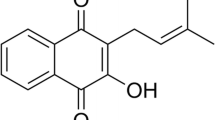Abstract
Topical administration is a preferable choice for local anesthetic delivery. Microemulsions have shown great effectiveness for transdermal transport of lidocaine. However, fabrication of microemulsions containing highly concentrated lidocaine (10%) to provide an extended local anesthetic effect is still a challenge. This study investigated the feasibility of using microemulsions for transdermal delivery of a high dosage of lidocaine (10%). At first, eutectic mixtures by kneading lidocaine with thymol were tailored to form a lipophilic solution, then the mixtures were readily incorporated into the oil phase of microemulsions after addition of proper surfactants and cosurfactants. The physicochemical properties, the skin permeation, local anesthetic efficacy, and the irritation experiment of the developed microemulsions were evaluated. The optimum composition was as follows: 12% of ethyl oleate as oil phase, 28% of the mixed surfactant, and cosurfactant (polyoxyl 15 hydroxystearate and ethanol) and 60% of the aqueous phase. The average particle size was about 13 nm. The transmission electron microscope (TEM) studies revealed almost homogeneous spherical globules without aggregation. The Fourier-transform infrared spectroscopy (FTIR) results highlighted the drugs homogeneously dispersed in the microemulsions. In vitro skin permeation and in vivo anesthesia effect evaluation indicated that microemulsions can enhance and extend the anesthetic effect of lidocaine. The irritable results indicated that the microemulsions had the better biocompatibility and the negligible influence on the dermal. Therefore, incorporating the eutectic mixtures into microemulsions could be proposed as an attractive choice and a promising transdermal delivery strategy for the future topical anesthetic therapy.






Similar content being viewed by others
References
Babaie S, Ghanbarzadeh S, Davaran S, Kouhsoltani M, Hamishehkar H. Nanoethosomes for dermal delivery of lidocaine. Adv Pharm Bull. 2015;5(4):549–556.
Negi P, Singh B, Sharma G, Beg S, Katare OP. Biocompatible lidocaine and prilocaine loaded-nanoemulsion system for enhanced percutaneous absorption: QbD-based optimisation, dermatokinetics and in vivo evaluation. J Microencapsul. 2015;32(5):419–31.
Sharma G, Kamboj S, Thakur K, Negi P, Raza K, Katare OP. Delivery of thermoresponsive-tailored mixed micellar nanogel of lidocaine and prilocaine with improved dermatokinetic profile and therapeutic efficacy in topical anaesthesia. AAPS PharmSciTech. 2017;18(3):1–13.
Shipton EA. New delivery systems for local anaesthetics-Part 2. Anesthesiol Res Pract. 2012;(1687–6992):289373.
Zhang J, Michniak-Kohn B. Investigation of microemulsion microstructures and their relationship to transdermal permeation of model drugs: ketoprofen, lidocaine, and caffeine. Int J Pharm. 2011;421(1):34–44.
Heuschkel S, Goebel A, Neubert RHH. Microemulsions-modern colloidal carrier for dermal and transdermal drug delivery. J Pharm Sci. 2010;97(2):603–31.
Cmrr N, Ponto T, Abd E, Grice JE, Hae B, Roberts MS. Topical Nano and Microemulsions for skin delivery. Pharmaceutics. 2017;9(4):37–62.
Sintov AC, Greenberg I. Comparative percutaneous permeation study using caffeine-loaded microemulsion showing low reliability of the frozen/thawed skin models. Int J Pharm. 2014;471(1–2):516–24.
Kang L, Jun HW, Mani N. Preparation and characterization of two-phase melt systems of lidocaine. Int J Pharm. 2001;222(1):35–44.
Ouchi K, Sekine J, Koga Y, Nakao S, Sugiyama K. Establishment of an animal model of sedation using epidural anesthesia that uses the tail-flick test for evaluating local anesthetic effects in rats. Exp Anim. 2013;62(2):137–44.
Padula C, Telò I, Di AI, Pescina S, Nicoli S, Santi P. Microemulsion containing triamcinolone acetonide for buccal administration. Eur J Pharm Sci. 2018;115:233–9.
Kajbafvala A, Salabat A, Salimi A. Formulation, characterization and in-vitro/ex-vivo evaluation of quercetin-loaded microemulsion for topical application. Pharm Dev Technol. 2018;23(8):741–50.
Bali V, Ali M, Ali J. Study of surfactant combinations and development of a novel nanoemulsion for minimising variations in bioavailability of ezetimibe. Colloids Surf B: Biointerfaces. 2010;76(2):410–20.
Mehta SK, Kaur G, Mutneja R, Bhasin KK. Solubilization, microstructure, and thermodynamics of fully dilutable U-type Brij microemulsion. J Colloid Interface Sci. 2009;338(2):542–9.
Kataoka H, Sakaki Y, Komatsu K, Shimada Y, Goto S. Melting process of the peritectic mixture of lidocaine and ibuprofen interpreted by site percolation theory model. J Pharm Sci. 2017;106(10):3016–21.
Zaini E, Wahyuni YS, Halim A, Yuliandra Y. Preparation of eutectic mixture of ketoprofen and nicotinamide for enhanced dissolution rate. Int J Pharm Sci Rev. 2015;35(1):161–164.
Kohli AK, Alpar HO. Potential use of nanoparticles for transcutaneous vaccine delivery: effect of particle size and charge. Int J Pharm. 2004;275(1–2):13–17.
Patel MR, Patel RB, Parikh JR, Patel BG. Formulation consideration and skin retention study of microemulsion containing tazarotene for targeted therapy of acne. J Pharm Investig. 2016;46(1):55–66.
Patel MR, Patel RB, Parikh JR, Solanki AB, Patel BG. Effect of formulation components on the in vitro permeation of microemulsion drug delivery system of fluconazole. AAPS PharmSciTech. 2009;10(3):917–23.
Shinde UA, Modani SH, Singh KH. Design and Development of repaglinide microemulsion gel for transdermal delivery. AAPS PharmSciTech. 2017;19(1):1–11.
Kogan A, Garti N. Microemulsions as transdermal drug delivery vehicles. Adv Colloid Interf Sci. 2006;123(21):369–85.
Acknowledgements
This work was supported by National Nature Science Foundation of China (No.81102820), and Natural Science Foundation of Shandong Province (No.ZR2016HM21), Scientific development program of Traditional Chinese Medicine of Shandong Province (2017-240; 2017-243), the Open Project of Shandong Collaborative Innovation Center for Antibody Drugs (No. CIC-AD1813), and Project of China Medical Education Association (No. 2016SKT-M030).
Author information
Authors and Affiliations
Corresponding authors
Ethics declarations
Conflict of Interest
The authors declare that they have no conflict of interest.
Additional information
Publisher’s Note
Springer Nature remains neutral with regard to jurisdictional claims in published maps and institutional affiliations.
Rights and permissions
About this article
Cite this article
Wang, Y., Wang, X., Wang, X. et al. Design and Development of Lidocaine Microemulsions for Transdermal Delivery. AAPS PharmSciTech 20, 63 (2019). https://doi.org/10.1208/s12249-018-1263-1
Received:
Accepted:
Published:
DOI: https://doi.org/10.1208/s12249-018-1263-1




